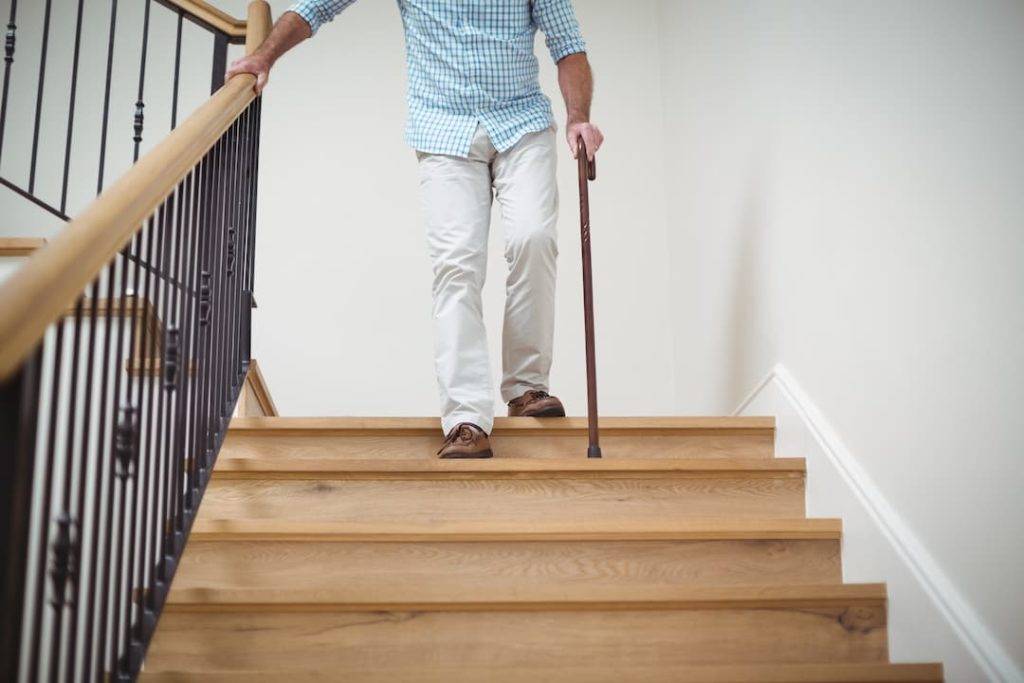Walking sticks are an excellent solution for people who struggle to walk safely unaided, but don’t need a wheelchair. Whether you have an injury or simply suffer from aching joints, a walking stick can be used to relieve pressure and improve your stability.
To ensure you’re using your walking aid safely, we’ve put together this guide. You may think that using a stick is intuitive, but you might be surprised to find out that they are meant to be used in a very specific way.

Get The Right Height Stick
The side of your stick can have a huge effect on how you walk. Many people have walking sticks that are too long or too short. This can result in an uneven step, pressure on your shoulders and instability when walking. The right height stick should come up to where your wrist bone sits when you’re standing in a neutral position.
Are You Using The Correct Hand To Hold Your Walking Stick?
This is where most people’s intuition can trip them up. You should be holding your walking stick on the side where you have the most strength in the leg. This allows you to use your more dominant side to aid the weaker side, rather than leaning too heavily on your upper body to support your frailer leg. The stick should move with the weak side, then make contact with the ground to take the pressure off that side as you move your stronger leg.
Practice Makes Perfect
If you’re not used to walking with a stick, or have been using your stick incorrectly for some time, it may take some practice. Before heading out on longer walks, make sure you practice in a safe environment first. Take plenty of breaks and practice little and often. Eventually, walking with the stick will feel more natural and you’ll move more efficiently.
Stairs & Sticks
If you’re not confident using the stairs with a walking stick, seek an alternative route if you can. Escalators, lifts and stairlifts are all better options if possible. Those who feel able to tackle the stairs can do so with a stick, but must take caution.
Use your stronger leg first when ascending the stairs, following with the stick and weaker leg. Use the stick to help push yourself up, so you won’t put too much pressure on your joints. When going downstairs, lead with the stick and weaker leg, before following with your better side. Take it slowly, and always use the hand rail.
For Walking Sticks, Choose Casterbridge Care & Mobility
If you’ve discovered that your stick isn’t the right height for you, you’ll need to get a new one. It’s a good idea to look at sticks in person, so you can measure the length and get a feel for whether it’s comfortable for you. Come and visit Casterbridge Care & Mobility to find your new walking stick.

